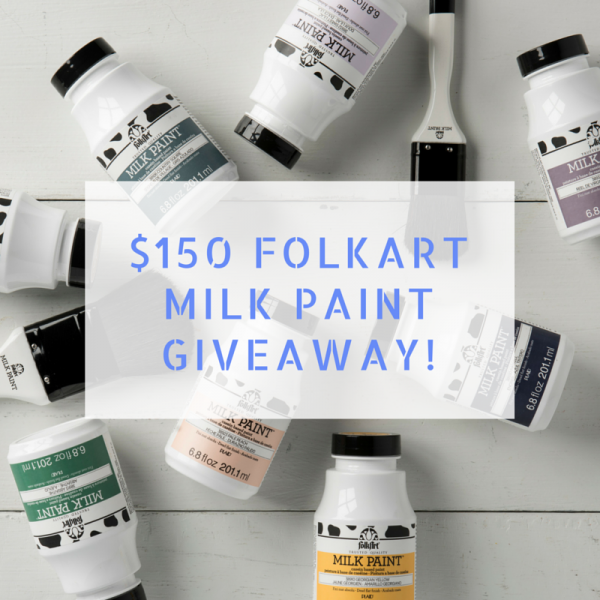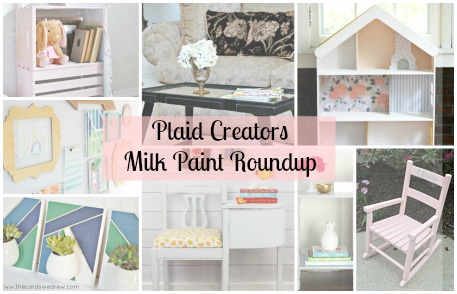
Giveaway- $150 of Folkart Milk Paint
Leave a comment in today’s post by July 28, 2016 and you are in the running for this amazing collection of paint!
Open to U. S. residents only please.

Looking for some inspiration on all sorts of great things you can upcycle with Folkart Milk Paint? Pop on over to the Plaid Pallet blog for some great ideas on what to paint with Milk Paint.
I had some fun painting a giant light up firefly jar with Plaid’s Chalk paint and Folkart Multi-surface paint that you can see the tutorial for over at Cheap Eats and Thrifty Crafts. They make great paint!

I love refurbishing projects! thanks for the giveaway!
This is a great idea! I’m upcycling a bunch of reclaimed items for my apartment; this would be great!
Wow what a generous giveaway! Good Luck everyone!
Oooh how fun! I’d love to play with this paint
I have a hideous mirror that is begging to be transformed by some amazing milk paint ;). Great giveaway!
Thank you for offering this giveaway, I haven’t heard of milk paint, so it would be interesting to win and test it out, lol
Bought a bottle of Quaker Blue tonight. I was drooling over all the colors, how hard it was to choose just one! About to start my first project tonight, a wooden crate from the craft store. Couldn’t be more excited about this paint!
Have been wanting to try this forever – would love to win some!
I am so excited!!!! I just saw this product in Michael’s today!!!! Can’t wait to try it!!!